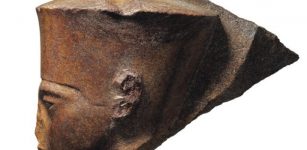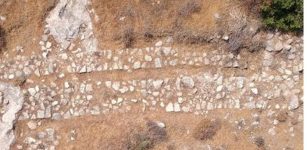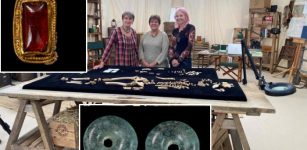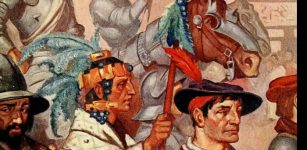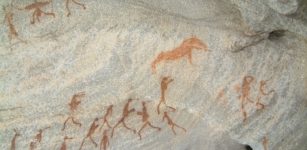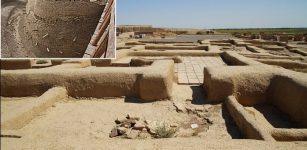Cerne Abbas Giant: Researchers Attempt To Determine Age Of Giant Figure
Conny Waters - AncientPages.com - Cerne Abbas Giant - the 180ft (55-meter) tall club-wielding man has long been considered as a sign of fertility due to his large, erect phallus.
It is not agreed how old the Cerne Abbas Giant is, but the most likely explanation is that he depicts Hercules, the god with superhuman strength. Hence he was probably created as a pagan idol during the Iron Age period of Britain.
 Cerne Abbas Giant is figure cut into the hillside to the north-east of the village of Cerne Abbas, and to the north of Dorchester, Dorset.
Cerne Abbas Giant is figure cut into the hillside to the north-east of the village of Cerne Abbas, and to the north of Dorchester, Dorset.
Now, archaeologists try for the first time, to determine the age of the mysterious Cerne Abbas Giant. The naked chalk figure brandishing a giant club overlooks the village of Cerne Abbas in Dorset.
The origins and purpose of Britain’s largest and perhaps best-known chalk hill figure remain a mystery.
CNN writes that there are several theories that propose the giant figure can be “an ancient spirituality symbol or likeness of Greco-Roman hero Hercules to a caricature of Oliver Cromwell, with the club a reference to repressive rule and the phallus a mockery of his puritanism.
Local folklore has long held it to be a fertility aid and the earliest recorded mention of the giant dates from 1694. The giant chalk figure was gifted to the National Trust in 1920 by the Pitt-Rivers family.
Now the charity, together with the University of Gloucestershire, is undertaking tests to establish the giant’s age.
 Volunteers refreshed the giant’s chalk. Image credit: Ben Birchall/PA
Volunteers refreshed the giant’s chalk. Image credit: Ben Birchall/PA
Archaeologists have excavated small trenches to enable samples of soil to be extracted from points on the giant’s elbows and feet.
See also:
Mystery Of Prehistoric Gigantic Hill Figures Of England
Over the coming weeks, Professor Phillip Toms, from the University of Gloucestershire, will attempt to date the samples using a technique called optically stimulated luminescence (OSL).
“The OSL technique is commonly used to determine when mineral grains in the soil were last exposed to sunlight,” Martin Papworth, a senior archaeologist at the National Trust, said.
“It was used to discover the age of the Uffington White Horse in Oxfordshire in the 1990s, which was found to be nearly 3,000-years-old – even more ancient than we had expected. We’re expecting the results of the tests in July. It is likely that the tests will give us a date range, rather than a specific age, but we hope they will help us better understand, and care for, this famous landmark.”
Gordon Bishop, chairman of the Cerne Historical Society, said villagers were eagerly awaiting the results.
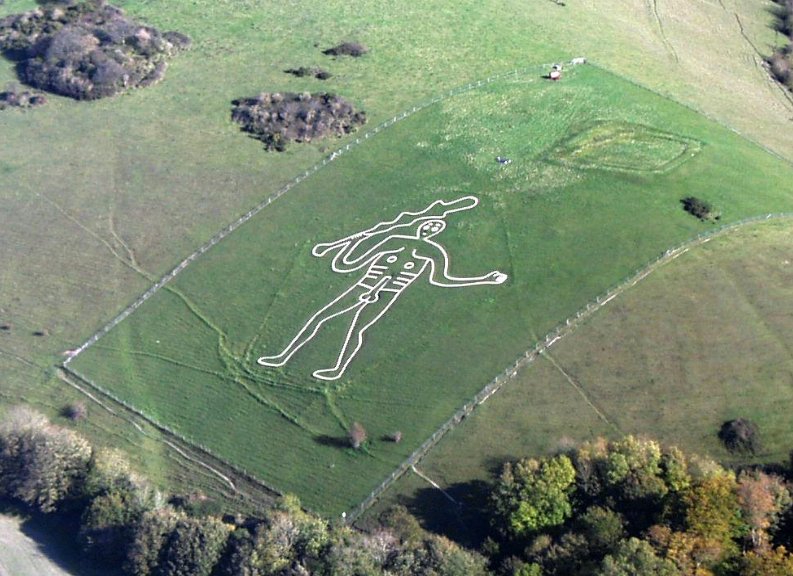 An aerial photograph of the Cerne Abbas Giant. source
An aerial photograph of the Cerne Abbas Giant. source
“Although there are some who would prefer the giant’s age and origins to remain a mystery, I think the majority would like to know at least whether he is ancient or no more than a few hundred-years-old,” he said.
“Whichever may be the case, he is unique.”
Mike Alle, an environmental archaeologist will additionally analyze soil samples containing the microscopic shells of land snails to learn more about the site’s past.
“There are 118 species of snails in Britain and many of them are habitat-specific, so their preserved shells can help us establish what a landscape was like at a certain time, and to track changes in land use over time,” Allen said.
“They should help us to discover whether the giant was created on a grazed chalk hillside, or whether people purposely cleared scrub to prepare the land for the figure.”
Last year, the giant figure was refreshed for the first time in 11 years, with a team of volunteers hammering in 17 tons of new chalk manually to better neutralize devastating weathering that can damage this historical and mysterious figure.
The earliest surviving documents regarding the Cerne Giant dates only as far back as 1694, but some residents of the village, who remember local stories tell of a giant that was killed on the hill. They claim that the figure had been there "beyond the antiquity of man". This chalk figure was placed there marking the giant's death.
Written by Conny Waters - AncientPages.com Staff Writer

